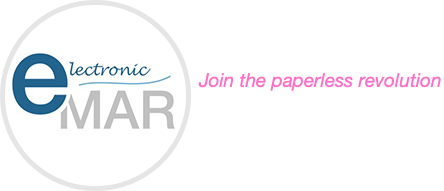Transitioning from paper-based Medication Administration Records (MAR) to Electronic MAR (eMAR) system is a significant operational change for care homes in the UK. It improves accuracy, enhances auditability, and aligns with digital care standards, but the process requires careful planning, staff engagement, and time.
Many care home managers ask, “How long will this actually take?” The short answer is: between four and twelve weeks, depending on the size of the home, staff readiness, and the provider’s implementation model. But this number only tells part of the story.
Here, we explore some of the questions care home managers commonly ask about how long the transition to eMAR takes and what influences the timeline.
What does a typical transition timeline look like?
A smooth eMAR rollout usually involves five stages, each with its own timeline. Here’s a general overview:
Weeks 1–2: Preparation
- Choose your eMAR provider
- Inform your pharmacy and staff
- Assess infrastructure (Wi-Fi, devices)
Weeks 3–4: Training and setup
- Train care staff and superusers
- Set up hardware and software
- Upload medication and resident data
Weeks 5–6: Parallel running
- Use both paper and eMAR simultaneously
- Monitor for consistency and staff confidence
- Address any usage or logging issues
Weeks 7–8: Full adoption
- Transition completely to eMAR
- Begin digital-only medication rounds
- Track usage and ensure compliance
Weeks 9 and beyond: Evaluation
- Conduct audits
- Collect staff feedback
- Optimise reporting and workflow
The full cycle—from planning to optimisation—takes two to three months, though some homes with fewer residents may complete it in less than six weeks.
How do I know if my care home is ready to begin the transition?
Managers often underestimate the importance of preparation. Before choosing an eMAR provider or setting a go-live date, it’s important to ask:
- Do we have stable Wi-Fi in all medication administration areas?
- Are our staff familiar with basic digital systems?
- Do we have a clear point person to lead the rollout?
- Is our pharmacy able to support an eMAR integration?
If any of these areas need improvement, resolving them beforehand avoids costly delays during implementation.
Does the size of the home affect how long it takes?
Yes, absolutely. A care home with 15 residents and one medication round per shift will adopt eMAR more quickly than a 60-bed nursing home with complex schedules and night-time meds.
In smaller homes, training sessions reach the whole team faster. Parallel running can be completed in a matter of days, and fewer staff means simpler coordination.
How much time should I allocate to staff training?
Staff training is one of the biggest time investments in the process, and it directly affects how soon your team feels confident using the system.
Most providers recommend:
- 2–3 hours of initial hands-on training per staff member
- Additional time for practice during the parallel-running phase
- Ongoing refreshers for new starters or reluctant adopters
If you rush training or skip it, the transition drags out. Allocating a full week for structured, supported training keeps the rest of the timeline on track.
What can delay the transition?
Several factors can extend the timeline if not addressed early:
- Poor internet connectivity – If staff can’t access the system in all care areas, medication rounds slow down or break entirely.
- Incomplete staff training – Staff who lack confidence may delay or resist using the system.
- Unresponsive pharmacy support – If your pharmacy is not prepared to sync medication data, the transition stalls.
- Lack of internal leadership – Without a project lead or “eMAR champion,” the implementation loses momentum.
Identifying and resolving these risks early helps keep the timeline realistic and achievable.
Should I go live all at once or in stages?
There are two common approaches:
- Full-site go-live: The entire care home switches to eMAR on the same day, following training and testing.
- Phased rollout: One unit or floor switches first, followed by others in sequence.
Many managers prefer a phased approach, especially in large homes. This spreads out staff demand, contains early issues, and reduces risk. A phased rollout may extend the full transition time by 1–2 weeks but improves long-term success.
How can I avoid repeating or extending the transition?
To keep your timeline tight and avoid rework, make sure you:
- Involve all stakeholders early, including your pharmacy and IT support
- Communicate a clear timeline with milestones to your staff
- Choose an eMAR provider with structured onboarding and training
- Allocate enough time for data setup and testing
- Monitor progress weekly and adapt only when necessary
When the groundwork is solid, most care homes complete the transition in 6–8 weeks, without needing to retrain or redo earlier phases.







